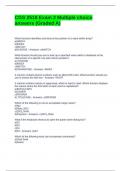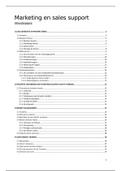Resumen
Summary JAMOVI for all tests (explanation + examples) | Premaster |Tilburg University | Midterm
- Grado
- Institución
How to use Jamovi for all your tests and examples for the midterm of Statistics. My lifesaver during the exam haha (since you can bring this on your USB-stick)
[Mostrar más]





